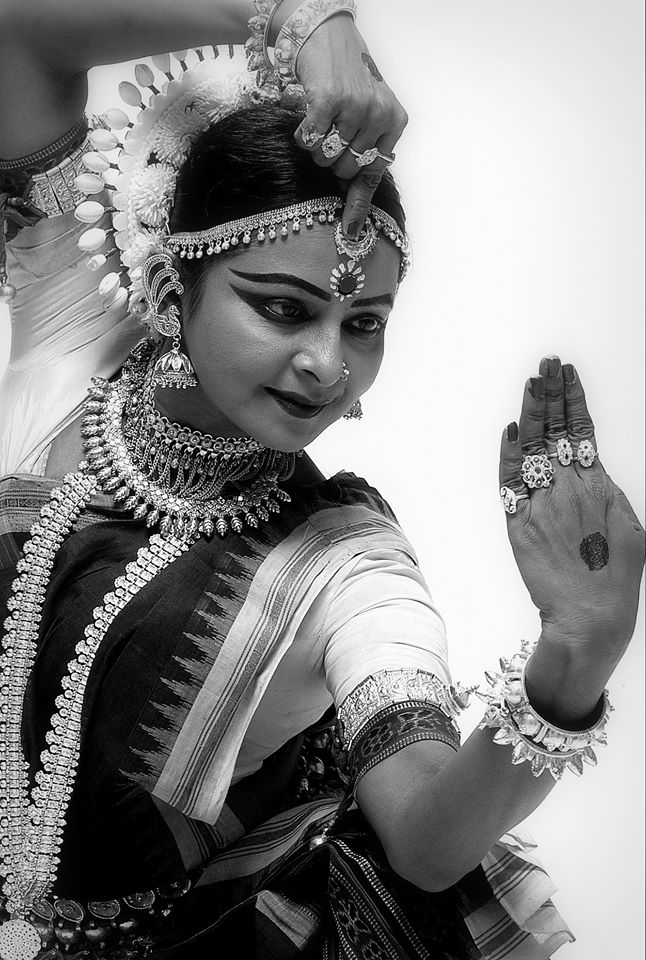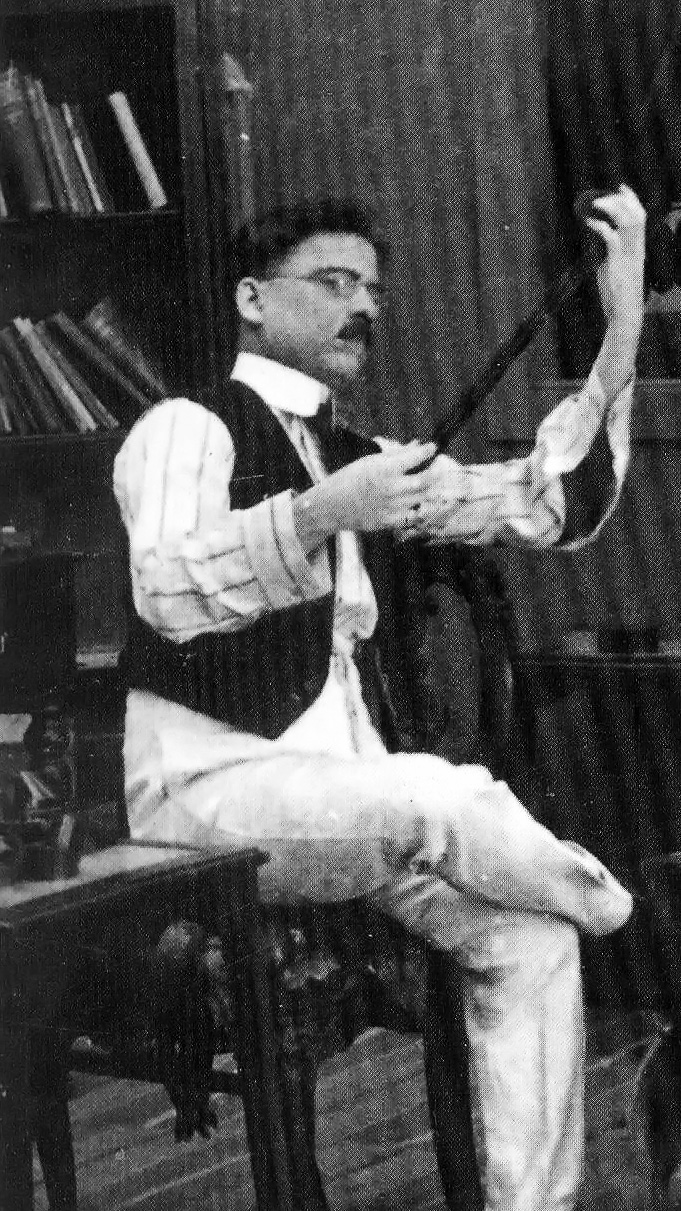|
Shobana Sahajananan
Shobana Sahajananan (born 26 April 1987) is a Malaysian Indian classical dancer of Indian descent. Biography Sahajananan specializes in the classical dance forms of Odissi, Bharathanatyam and Bollywood. She started her dance training at a very young age. She studied Bharatanatyam under Guru Devi Maheswaran, later pursuing Odissi under guru Ramli Ibrahim's watchful eye. She be performed her Arangetram (graduation from Bharathanatyam) with her sister, Shalini, in May 2012. She also taught Bollywood dance in Kuala Lumpur Performing Arts Centre (KLPAC). Sahajananan choreographs, conducts workshops, dance lecture demos and creates new Bharatanatyam, Bollywood, Modern/Classical fusions and experimental dance. In October 2011 she performed in the ''Short and Sweet'' Dance festival at KLPAC, where she attracted attention with her profound grace in Bollywood dance and in her dancing roots Bharathanatyam and Odissi. She performs on stage extensively. Current work Sahajananan is now ... [...More Info...] [...Related Items...] OR: [Wikipedia] [Google] [Baidu] |
Malaysians
Malaysians (Malay language, Malay: ''Orang Malaysia'') are citizens who are identified with the country of Malaysia. Although citizens make up the majority of Malaysians, non-citizen residents may also claim a Malaysian identity. The country is home to people of various Nationality, national, Ethnic group, ethnic and Religion, religious origins. As a result, many Malaysians do not equate their nationality with ethnicity, but with citizenship and allegiance to Malaysia. Majority of the population, however, belong to several clearly defined racial groups within the country with their own distinct cultures and traditions: Malays (ethnic group), Malays, Orang Asli (aboriginal population), Malaysian Chinese (primarily Han Chinese and Peranakan Chinese, Peranakans), Malaysian Indians (primarily South Asia, South Asian Tamils and Chitty). The majority of the non-Malay and non-aboriginal population in modern Malaysia is made up of immigrants and their descendants. Following the initi ... [...More Info...] [...Related Items...] OR: [Wikipedia] [Google] [Baidu] |
Indian Classical Dance
Indian classical dance, or ''Shastriya Nritya'', is an umbrella term for different regionally-specific Indian classical dance traditions, rooted in predominantly Hindu musical theatre performance,, Quote: All of the dances considered to be part of the Indian classical canon (Bharata Natyam, Chhau, Kathak, Kathakali, Kuchipudi, Manipuri, Mohiniattam, Odissi, Sattriya, and Yakshagana) trace their roots to religious practices (...) the Indian diaspora has led to the translocation of Hindu dances to Europe, North America and the world." the theory and practice of which can be traced to the Sanskrit text ''Natya Shastra''. The number of Indian classical dance styles ranges from six to eight to twelve, or more, depending on the source and scholar; the main organisation for Indian arts preservation, the Sangeet Natak Academy recognizes eight: ''Bharatanatyam'', ''Kathak'', '' Kuchipudi'', '' Odissi'', '' Kathakali'', '' Sattriya'', '' Manipuri'' and '' Mohiniyattam''. Additionally, the ... [...More Info...] [...Related Items...] OR: [Wikipedia] [Google] [Baidu] |
India
India, officially the Republic of India, is a country in South Asia. It is the List of countries and dependencies by area, seventh-largest country by area; the List of countries by population (United Nations), most populous country since 2023; and, since its independence in 1947, the world's most populous democracy. Bounded by the Indian Ocean on the south, the Arabian Sea on the southwest, and the Bay of Bengal on the southeast, it shares land borders with Pakistan to the west; China, Nepal, and Bhutan to the north; and Bangladesh and Myanmar to the east. In the Indian Ocean, India is near Sri Lanka and the Maldives; its Andaman and Nicobar Islands share a maritime border with Thailand, Myanmar, and Indonesia. Modern humans arrived on the Indian subcontinent from Africa no later than 55,000 years ago., "Y-Chromosome and Mt-DNA data support the colonization of South Asia by modern humans originating in Africa. ... Coalescence dates for most non-European populations averag ... [...More Info...] [...Related Items...] OR: [Wikipedia] [Google] [Baidu] |
Odissi
''Odissi'' (''ଓଡ଼ିଶୀ'') also referred to as ''Orissi'' in old literature, oldest surviving classical dance of India, is a major ancient Indian classical dance that originated in the Hindu temple, temples of Odisha – an eastern coastal state of India.Odissi ''Encyclopædia Britannica'' (2013) Odissi, in its history, was performed predominantly by women, and expressed religious stories and spiritual ideas, particularly of Vaishnavism through songs written and composed according to the ''ragas'' & ''talas'' of Odissi music by ancient poets of the state. Odissi performances have also expressed ideas of other traditions such as those related to Hindu deities Shiva and Surya, as well as Hindu goddesses (Shaktism)., Quote: "There are other te ... [...More Info...] [...Related Items...] OR: [Wikipedia] [Google] [Baidu] |
Bharathanatyam
''Bharatanatyam'' is a Indian classical dance form that came from Tamil Nadu, India. It is a classical dance form recognized by the Sangeet Natak Akademi, and expresses South Indian religious themes and spiritual ideas of Hinduism and Jainism.Bharata-natyam ''Encyclopædia Britannica''. 2007 A description of precursors of ''Bharatanatyam'' from the dated around (500 BCE) and in the ancient Tamil epic '' Silappatikaram'' dated around (171 CE), while temple sculptures of the 6th to 9th century CE suggest dance was a refined performance art by the mid-1st millennium CE. [...More Info...] [...Related Items...] OR: [Wikipedia] [Google] [Baidu] |
Bollywood
Hindi cinema, popularly known as Bollywood and formerly as Bombay cinema, is primarily produced in Mumbai. The popular term Bollywood is a portmanteau of "Bombay" (former name of Mumbai) and "Cinema of the United States, Hollywood". The industry, producing films in the Hindi language, is a part of the larger Indian cinema industry, which also includes Cinema of South India, South Indian cinema and other smaller Cinema of India#Cinema by language, film industries. The term 'Bollywood', often mistakenly used to refer to Indian cinema as a whole, only refers to Hindi-language films, with Indian cinema being an umbrella term that includes all the Cinema of India#Cinema by language, film industries in the country, each offering films in diverse languages and styles. In 2017, Indian cinema produced 1,986 feature films, of which the largest number, 364, have been in Hindi. In 2022, Hindi cinema represented 33% of box office revenue, followed by Telugu cinema, Telugu and Tamil cine ... [...More Info...] [...Related Items...] OR: [Wikipedia] [Google] [Baidu] |
Arangetram (dance)
Arangetram in Tamil and Malayalam, known as "Rangapravesha" in Kannada and "Rangapravesham" in Telugu is the debut on-stage performance of a former student of Indian classical dance and music that follows years of training in classical music and dancing. Many Indian classical dance forms require their followers to perform an arangetram. Once a student has done so, they are thereafter allowed to perform dances on their own and to teach aspiring dancers. Etymology Arangetram is a portmanteau of the Tamil words for stage ("arangu") and ascent ("etram") and its literal translation is "climbing or ascending the stage". In the context of dance, the word refers to the graduation ceremony in which the guru presents his or her pupil to the public. Its origins can be traced to the devdasi (temple dancer) tradition. Arangetram can be performed for other Indian classical dance styles such as Kuchipudi, Manipuri, Kathakali, Bharatanatyam, and Mohiniattam as well as vocal and instrument re ... [...More Info...] [...Related Items...] OR: [Wikipedia] [Google] [Baidu] |
Kuala Lumpur
Kuala Lumpur (KL), officially the Federal Territory of Kuala Lumpur, is the capital city and a Federal Territories of Malaysia, federal territory of Malaysia. It is the largest city in the country, covering an area of with a census population of 2,075,600 . Greater Kuala Lumpur, also known as the Klang Valley, is an urban agglomeration of 8.8 million people as of 2024. It is among the fastest growing metropolitan regions in Southeast Asia, both in population and economic development. The city serves as the cultural, financial, tourism, political and economic centre of Malaysia. It is also home to the Parliament of Malaysia, Malaysian parliament (consisting of the Dewan Rakyat and the Dewan Negara) and the Istana Negara, Jalan Tuanku Abdul Halim, Istana Negara, the official residence of the King of Malaysia, monarch (''Yang di-Pertuan Agong''). Kuala Lumpur was first developed around 1857 as a town serving the tin mining, tin mines of the region, and important figures such as Ya ... [...More Info...] [...Related Items...] OR: [Wikipedia] [Google] [Baidu] |
Dance In India
Dance in India comprises numerous styles of dances, generally classified as Indian classical dance, classical or Folk dance in India, folk. As with other aspects of Indian culture, different forms of dances originated in different parts of India, developed according to the local traditions and also imbibed elements from other parts of the country. Sangeet Natak Academy, the national academy for performing arts in India, recognizes eight traditional dances as Indian classical dances, while other sources and scholars recognize more. These have roots in the Sanskrit text ''Natya Shastra'',, Quote: "the Natyashastra remains the ultimate authority for any dance form that claims to be 'classical' dance, rather than 'folk' dance". and the Religion, religious performance arts of Hinduism., Quote: Hindu classical dance-forms, like Hindu music, are associated with worship. References to dance and music are found in the Vedic literature, (...)"., Quote: All of the dances considered to be pa ... [...More Info...] [...Related Items...] OR: [Wikipedia] [Google] [Baidu] |
Odissi Exponents
''Odissi'' (''ଓଡ଼ିଶୀ'') also referred to as ''Orissi'' in old literature, oldest surviving classical dance of India, is a major ancient Indian classical dance that originated in the temples of Odisha – an eastern coastal state of India.Odissi ''Encyclopædia Britannica'' (2013) Odissi, in its history, was performed predominantly by women, and expressed stories and spiritual ideas, particularly of through songs written and composed according to the ''ragas'' & ''talas'' of |
Living People
Purpose: Because living persons may suffer personal harm from inappropriate information, we should watch their articles carefully. By adding an article to this category, it marks them with a notice about sources whenever someone tries to edit them, to remind them of WP:BLP (biographies of living persons) policy that these articles must maintain a neutral point of view, maintain factual accuracy, and be properly sourced. Recent changes to these articles are listed on Special:RecentChangesLinked/Living people. Organization: This category should not be sub-categorized. Entries are generally sorted by family name In many societies, a surname, family name, or last name is the mostly hereditary portion of one's personal name that indicates one's family. It is typically combined with a given name to form the full name of a person, although several give .... Maintenance: Individuals of advanced age (over 90), for whom there has been no new documentation in the last ten ... [...More Info...] [...Related Items...] OR: [Wikipedia] [Google] [Baidu] |





